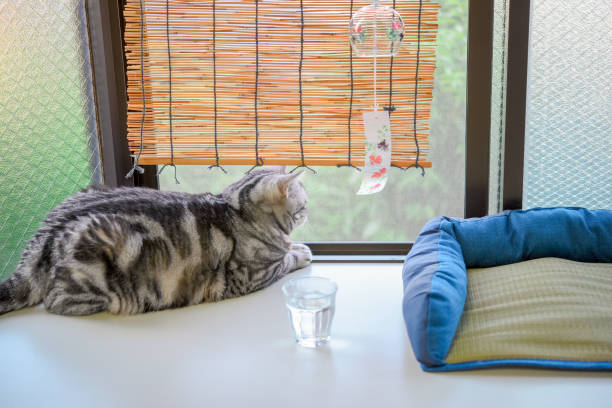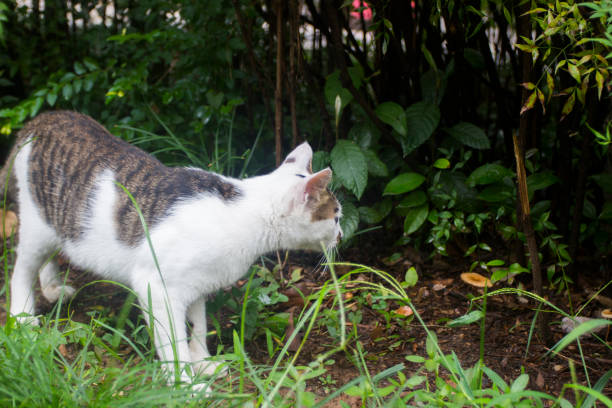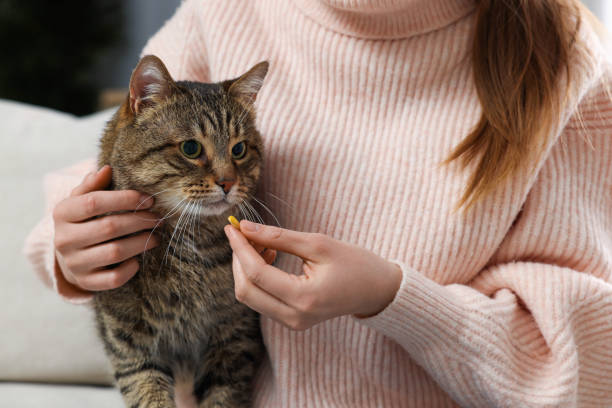Tips For Introducing Cats to Each Other
It is important to take the time to properly introduce your cats to each other. This will help avoid a potentially dangerous cat fight and allow your cats to live peacefully together.
This process will likely take days or even months depending on the breed and personality of each cat. During this time it is important that visual contact with each other is associated with positive things such as food treats or play time.
Set Up a Separate Room
Ideally, the new cat will spend time in a room that your resident cat doesn’t frequent. This will help the cats become accustomed to each other’s scent before physically meeting. You can also encourage positive associations by feeding the cats near each other, using treats as a lure to get them to interact, or grooming them in front of one another (if they tolerate it).

When your pets have established some positive associations, remove the barrier completely. If you notice negative behavior such as growling, hissing or flattening of the ears with tense body posture, distract them with play or a food motivator and return to step four.
Continue to swap locations with your cats and kittens until you can see them eye-to-eye without a visual barrier. This may take a few days, weeks or even months. During this process, it’s important to make sure both cats have all of their basic supplies such as food, water and litter box. You may also want to invest in a few extra toys, so each cat has something to play with when they’re not engaging in direct contact with one another.
Start with Scent Swapping
When it comes to introducing cats, scent is really important. Before letting your two pets meet, try to normalise their smells by doing things like brushing them and wiping them with a soft cloth containing the other cat’s scent.
Once your existing and new cat are comfortable with each other’s scent, you can start allowing short sessions of visual interaction behind a barrier. This is best done when both cats are engaged in a pleasurable activity such as play or feeding. This may take days or weeks, and it’s important to be patient.

Eventually, you can open up the door and let your cats see each other for longer periods of time – but make sure it’s always supervised. You’ll know when the cats are ready to spend more time together if neither one shows any signs of stress or aggression. It could be as little as a few hours (especially with kittens) or as long as months before they are happy to leave each other alone for extended periods of time.
Give Each Cat Their Own Space
Whether you already have cats and want to bring in a kitten, or you are bringing in a new cat (or kitten) because of a companion loss, following these steps should help you achieve a successful meeting. It may take days, weeks or even months before they are able to spend time loose together, however, and it is important that you keep them separated whenever possible until they are able to live peacefully side by side without incident.
After several days of scent swapping, and visual contact only through the door (and then only when one cat is eating or playing near it), open the door a crack to allow them to sniff each other but not stick their heads out. Listen for hissing and growling, and close the door if either cat is uncomfortable.
When the cats are comfortable with this next step, start to encourage them to play in the same room by feeding them treats and toys that they can paw at through the closed door. If hissing and a physical fight starts, interrupt them by making loud noises or throwing a soft object between them.
Give Each Cat Their Own Resources
Cats are very territorial, especially when it comes to their food and water, beds, hiding areas and litter boxes. To minimize competition for these resources, make sure each cat has their own during the initial stages of introducing them to each other.
Once cats are accustomed to each other’s scent, it is time to begin visual contact. Separate the two cats physically with a screen door or baby gate so they can see each other but cannot get to each other. Give them treats so they spend time close together and play with them using a feather to encourage their interaction. The goal is for the cats to become comfortable with each other through visual contact, sniff noses and rub against the door.

It may take weeks or even months before your cats are ready to live together without supervision. During this time, always keep one of the cats in a separate room at night and ensure that there is a way for them to escape if needed. If at any point you observe fearful or aggressive behavior, consult with a trainer or veterinarian right away to prevent the situation from worsening.
Let Them Spend Time Together
After the cats are comfortable with the scent swapping and visual interaction and have spent time in their separate areas without exhibiting aggression or stress, you can gradually let them spend more time together.
To start, have one cat on each side of a baby gate or screen door that allows them to see each other but not touch. With a second person on hand, engage the cats in interactive play using a toy that both like (a fishing rod toy with a string and feathers is ideal). Keep the sessions short and positive, and redirect them away from each other if they demonstrate aggressive behaviour.
Continue to feed the cats near the barrier so that they learn that coming together and being close to each other results in a pleasurable experience. Make sure each cat has plenty of food, water, bedding, hiding spaces, scratching posts and toys so that they don’t feel that they have to compete for resources.

